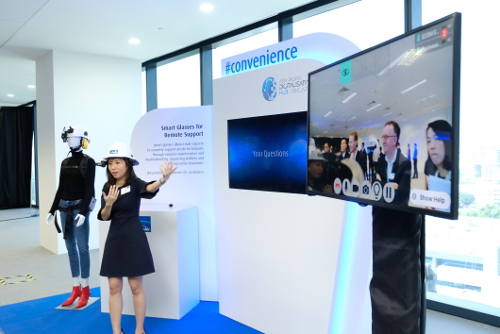The Linde Group has launched its Asia Pacific Digitalisation Hub to rapidly identify, develop and trial emergent digital technologies for industrial applications in the region and beyond.
In partnership with Singapore Economic Development Board (EDB), Linde will invest over S$30 million (US$22.74 million) in the Hub, which will expand the company’s digital capabilities for the gases and engineering industries.
It is the company’s first digitalization hub outside of Germany.
Mark L. Ewig, global strategic marketing manager tells Food News International more about digitization and coping with change.
FNI: How will the hub be relevant to food and beverage (F&B) manufacturers in the region?
Ewig: Asia Pacific is Linde’s fastest growing market, and the region is especially open to new technologies and innovative gases applications.
The future of digitalization is a prerequisite for F&B manufacturers, as the demand for ready-to-consume food is increasing in the region.
Various F&B manufacturers have tapped into Linde’s expertise in industrial gases in their packaging and preservation processes.
The Asia Pacific Digitalisation Hub will capitalize on the tremendous innovation coming out of the region, allowing Linde to extend its lead in digitalizing the gases business.
FNI: How are F&B factories using digitalization systems/processes in Asia today?
Ewig: The digitalization boom of the past decade has had a significant impact on all industrial operations.
F&B manufacturers are in the early stages of the digitalization evolution.
We have seen some Asian companies invest in technologies that monitor the manufacturing processes data and automatically adjust to changing variables.
Unfortunately, F&B companies still lagging in the digitalization conversion available to them.
When companies view their entire production line as an interconnected multi-processing operation, it allows businesses to invest in technologies such as smart robotics, cloud computing and predictive analytics to automatically collect data.
The data can then be mined to better understand process performance, cost parameters, as well as cause and effect risks.
Real-time data can permit managers to address problems before they become critical events and costly waste.
FNI: What are the challenges in going digital for F&B factories? What solutions have been successfully implemented to overcome these challenges?
Ewig: Whenever we’re dealing with change, we have to be sensitive to the needs of our customers.
Change must make sense, especially when the status quo does not seem to elicit any notable problems or challenges.
I think the major challenge for ‘going’ digital in F&B factories is the initial investment cost, and the availability of a customized algorithm software necessary to holistically analyze data from multiple processing equipment.
Currently, original equipment manufacturers or OEMs offer solutions that only monitor and control a single equipment performance; they are not integrated to the entire processing line.
There is also a fear of change and the increase risk of relying on digital solutions that may not be built for the harsh environment of a food plant and could fail.
In addition, food companies need to staff up on IT and technology software programmers to service the sensors and robotics.
Usability is one of the areas we do focus on, not only for our customers, but also for our staff.
We are constantly attempting to simplify procedures so that it can be easily understood by all.
We also ensure that there is provision of adequate training to make sure that each staff knows how to operate the new technologies effectively.
In Asia, one of the challenges that our customers face is space constraint on the manufacturing floor.
So, when it comes to considering equipment upgrades, a key concern is the fit of new equipment into the customer’s existing infrastructure.
Linde has introduced an app called FreezAR which uses augmented reality to enable our field sales teams to project our cryogenic freezers within the customer’s factory to show potential customers life-size equipment and demonstrate its functionalities interactively.
FNI: In your opinion, how important will digitalization be for F&B manufacturers in the future? How can factories prepare to fully embrace digitalization?
Ewig: Digital transformation will result in better productivity, longer up-time, greater efficiency, more flexibility and improved yields.
Companies that embrace digitalization are in a better position to compete and win a greater share of the customer’s wallet in a competitive environment.
The starting point for any transformation is information.
It is vital that factories become fluent with collecting, organizing and understanding data. For example, by tracking customer purchase patterns and production downtime, businesses can become better at anticipating demand and identifying problems.
To Linde, transformation is a constant evolutionary process.
We innovate because we know we must stay ahead of the curve.
We must not be unprepared and vulnerable when change eventually, and inevitably, catches up.











